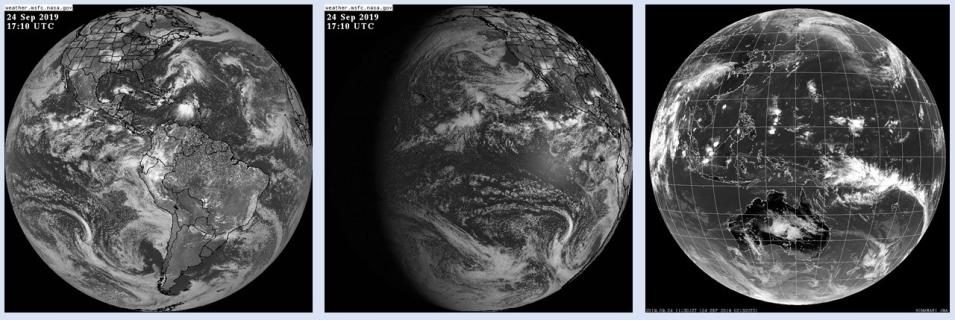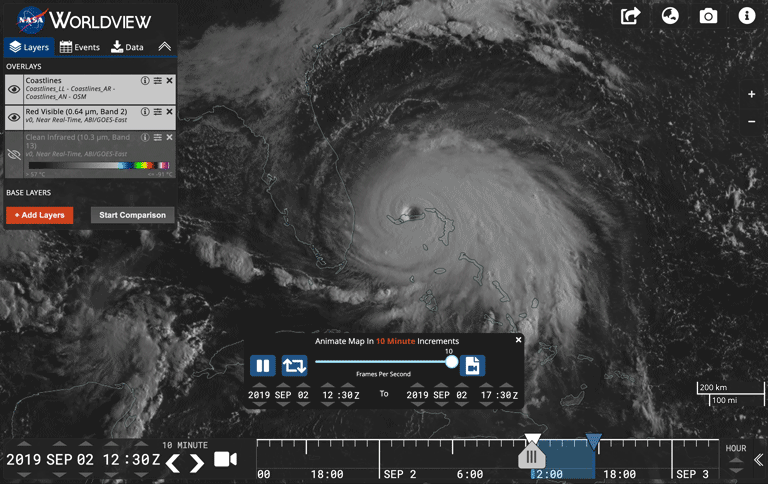The addition of geostationary imagery opens up a new way of using Worldview. “With geostationary imagery you can really look at the evolution of things like convection and tropical cyclones—especially when they’re undergoing rapid intensification,” says Dr. Hain. “Worldview is so nice and easy to use that it was a no-brainer for us when they showed interest in integrating the geostationary data into the system.”
Boller agrees that Worldview is a good interface for this imagery. “Worldview was designed to be highly responsive for interactive browsing, plus it has the capability to do playbacks and loops and then export these loops to video,” he says. “I think it was a perfect match of [SPoRT] wanting to have a newer interface for this imagery and us wanting to add this type of imagery. It’s a good fit for everybody.”
Worldview also enables geostationary imagery to be used with polar-orbiting imagery. For example, it is possible to overlay MODIS-detected thermal anomaly and hotspot location markers onto a GOES image and then go through a series of GOES 10-minute images to see how active fires develop and change over several hours.
While having full-disk geostationary imagery updated every 10 minutes is a boon to data users, it also represents a lot of data coming into GIBS/Worldview, and data storage will be used up quickly if every 10-minute image is kept. To manage this issue, at least initially, Boller and his team plan keep only the most recent month of imagery and are considering developing files related to specific large events, such as Hurricane Dorian. Hosting this imagery in the cloud is definitely an option, and one Boller says will be explored in the future.
For the present, though, being able to view and interactively explore geostationary imagery in Worldview is a real game-changer in how this application can be used. “It’s an easy case to make as to why you need geostationary data,” says Dr. Hain. “I know it required a bit of work at their end to deal with 10-minute data, but for Worldview users it will really be worth it.”
Ryan Boller couldn’t agree more. “I’m very excited to have Worldview show off this imagery,” he says. “It’s a real milestone to combine the strengths of geostationary and polar-orbiting spacecraft onto a single interactive map where you can see almost the entire world updated every 10 minutes!”
Learn more:
Interactively explore Hurricane Dorian using geostationary imagery in NASA Worldview.
Read more about this effort in the GIBS Blog.


